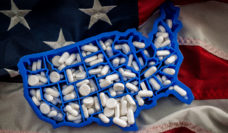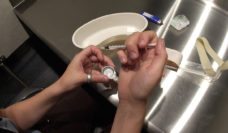In 2015, the small town of Austin, Indiana received national media attention following a severe HIV outbreak caused by a high level of injection drug use in the community. Approximately 215 HIV infections were reported in this town of approximately 4,000. CDC director Tom Frieden noted at the time that the rate of HIV infection in Austin was nearing the highest in the world. The situation was so serious that then-Indiana Governor Mike Pence reluctantly authorized the use of a syringe services program to curb the spread (hereafter referred to as ‘syringe programs’).
This outbreak occurred in a rural town close to the Kentucky border. Kentucky officials carefully observed Indiana’s public health response as it unfolded. Knowing that injection drug use was becoming more prevalent inside their state, and eager to prevent a similar outbreak, the Kentucky General Assembly passed legislation that allowed for the local operation of syringe programs. Since then, Kentucky has established a large operational network of syringe programs across the state.
Our team of analysts within the Kentucky Cabinet for Health and Family Services was tasked with exploring whether syringe programs have managed to decrease infections related to injection drug use (specifically HIV, hepatitis C, hepatitis B, osteomyelitis, endocarditis, and skin/soft tissue infections). We used Kentucky Medicaid data between 2015 and 2019 to perform our study, and subsequently published our results in the Journal of Rural Health.
Our findings estimated a statistically significant decline in new diagnoses of infectious diseases following the opening of a new syringe program. This finding held true in both rural and metropolitan areas across the state.
Using Medicaid data presented us with a fundamental challenge at the outset of our study: claims data does not directly indicate injection drug use. This meant that identifying a suitable study sample would take some creativity. Data from health care claims merely serves as a record of the services provided to beneficiaries for payment to health care providers and is not produced for the express purposes of conducting research. Additionally, because we were using data independent from the syringe program, we could not directly identify individuals who had been using the service within the county.
It was therefore necessary to use our available data to create a measure that described who was at risk for contracting one of the aforementioned diseases. After months of meetings with several experts and organizations, as well as careful review of other work in this area, we decided that people with diagnosed substance use disorders associated with injection drug use in our Medicaid claims data would be the most appropriate study population. Research published soon after our analyses provided additional support for our methods.
Our findings estimated a statistically significant decline in new diagnoses of infectious diseases following the opening of a new syringe program. This finding held true in both rural and metropolitan areas across the state. This is an exciting and timely finding, as many analyses have historically been focused on metropolitan areas, and rural adoption of syringe programs has been much slower than in large cities. Our work also offers a replicable method for other states to use to test the impact of syringe programs on the health of their own Medicaid populations.
Despite evidence of their capacity to prevent the spread of disease, syringe programs are still not legally permitted in much of the U.S. This reality places responsibility on the shoulders of those who make the case for syringe programs. We believe our work provides public health professionals with a useful resource to facilitate a dialog with rural community leaders as they pursue ways to help their constituents lead healthy lives.
Photo via Getty Images

















